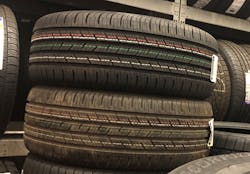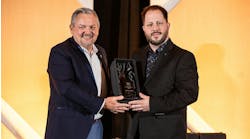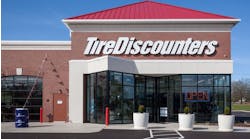I often refer to the “true cost” when working through the value of our work with D2D members. But I've never really put it in terms of customer service and the fallout that occurs when we fall short of delivering a great experience.
It's 7 a.m. and your store line rings. You're busy getting your morning routine flushed out and on the fifth ring you pick up the phone. It's a first-time customer with a flat on the way to work.
Maybe you know your workload for the day or maybe you don't, but you recognize how important a quick flat repair can be in earning a new customer and you offer to repair it as soon as they can bring it in.
An hour later, the customer shows up and is appreciative of your help all the way until you tell him it will be at least an hour. Disappointed, but with no other options, the customer agrees.
Sixty minutes pass and your new customer steps back up to the counter and asks why his car hasn't moved. You scramble and let him know it's next to come into the bay.
Once in the bay, your tech’s time is split between a scheduled, waiting oil change/rotation and the flat repair. It takes almost another hour to get the repair done.
Your tech pulls the customer’s car around. The customer sees this and they both meet you at the counter. Even though it was just a flat repair, somehow your team failed to update the work order, resulting in another five uncomfortable minutes. The customer then pays and drives away.
We all know these situations happen. My hope is that a quick run-down of the “true cost” will help you get a better grip on ensuring that you don’t let experiences like this occur.
I recently read a study that showed industry average net in 2022 was 4%, give or take. Let's assume that's you. While you're likely not spending as much on advertising these days, the average cost to acquire a new customer still sits in the $300 to $500 range, depending on market.
Let's use $400. The cost, or maybe the loss, of that flat repair customer in that situation is $400 divided by 4% — or $10,000. Let's flip that another way. Let's say your average ticket is $400. Your flat-repair-lost customer’s true cost was $10,000. That’s equal to 25 customers’ revenue.
While that may seem like an overstatement, I'm just getting started. Your customer’s time has value too, right?
Let's say they make $25 an hour with whatever they do. They just spent three-plus hours getting a flat repair. Sure, only two-plus of that was on your watch, but they're blaming you for three-plus.
I'll assume this customer saves 3% of his income. (That's his net.) Three hours at $25 an hour at a net rate of 3% turns into a true cost of $2,500 for them.
Your time and your teams’ time spent losing this customer has value too. Let's estimate that one total hour of customer/vehicle service time was wasted providing a bad experience. Your average cost per hour at your location is $35. With your net at 4%, that's another $875. Let's pause and tally all this before we continue. That's $10,000 plus $2,500 plus $875. Short story, the “true cost” was $13,750.
While the customer’s car was in your bay, you failed to do a super-basic inspection, which would have revealed that they could use an alignment and brakes. Let's call it $600 in overlooked sales. That's another big “true cost.” The fall-out from this entire experience is really adding up!
We've all heard the term "cash is king” and while that's true, we need to recognize that cash only changes hands when the value of what we're providing meets or exceeds the customer’s perceived investment.
Managing cash flow starts with executing experiences our customers will invest in again and again. If the experience I walked you through had been managed differently, the outcome could well be very different.
Let’s say that instead of still planning your day when the phone rang first thing in the morning, you decided to prepare your game plan the night before. You were ready for the call, picked it up by the third ring and leveled expectations with your customer.
Your customer walks in with a better understanding of the time required. Furthermore, had you set expectations up front you would have set yourself up to exceed those expectations on the back end by asking, ‘What time do you need your car back by?"
The next time a poor retail experience happens at your dealership, I challenge you to quantify it in terms of true cost. Take those learnings and spend 15 minutes a day teaching those around you how to prevent them. The more you grasp the value of providing an efficient experience, the more you'll benefit from delivering those experiences yourself.




